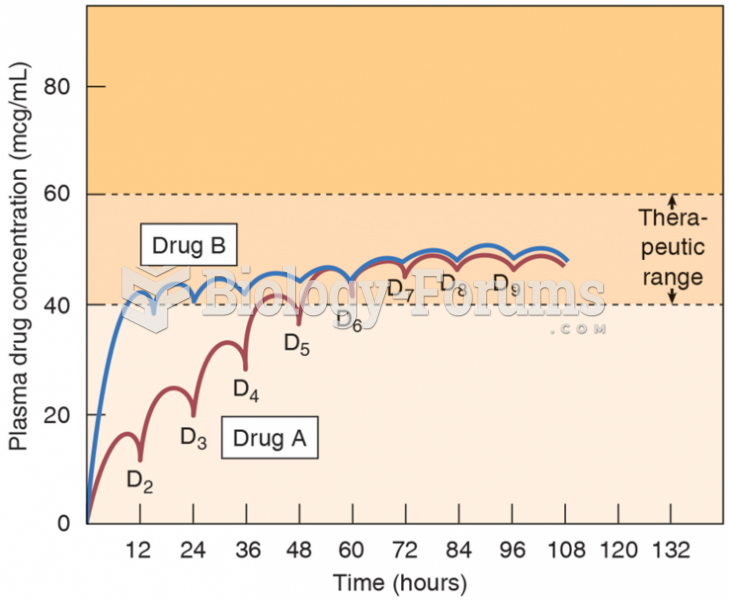Answer to Question 1
Correct Answer: 1,3,4
Rationale 1: The addition of a second medication makes the client prone to hypotension. Taking the drug right before bedtime is a safety precaution.
Rationale 2: There is no reason to avoid oral intake for 2 hours after an antidysrhythmic medication.
Rationale 3: Orthostatic hypotension can be an adverse effect of antidysrhythmic medications, particularly when multiple drugs are taken. Sitting on the side of the bed before arising is a safety precaution.
Rationale 4: Electrolyte imbalance can occur secondary to drug therapy for dysrhythmia. Electrolyte levels should be monitored.
Rationale 5: Hair loss is not an expected adverse effect of antidysrhythmic medications.
Global Rationale: The addition of a second medication makes the client prone to hypotension. Taking the drug right before bedtime is a safety precaution. Orthostatic hypotension can be an adverse effect of antidysrhythmic medications, particularly when multiple drugs are taken. Sitting on the side of the bed before arising is a safety precaution. Electrolyte imbalance can occur secondary to drug therapy for dysrhythmia. Electrolyte levels should be monitored. There is no reason to avoid oral intake for 2 hours after an antidysrhythmic medication. Hair loss is not an expected adverse effect of antidysrhythmic medications.
Answer to Question 2
Correct Answer: 2
Rationale 1: The nurse has not answered the client's question and may have increased the client's confusion.
Rationale 2: Catheter ablation has been shown to be more successful in treating many dysrhythmias than is the prophylactic use of medications. The treatment is generally definitive and results in fewer adverse effects.
Rationale 3: Medications for the control of atrial fibrillation are still on the market.
Rationale 4: Atrial fibrillation does have serious consequences in some cases, but many clients are managed with medication therapy alone.
Global Rationale: Catheter ablation has been shown to be more successful in treating many dysrhythmias than is the prophylactic use of medications. The treatment is generally definitive and results in fewer adverse effects. The nurse has not answered the client's question and may have increased the client's confusion. Medications for the control of atrial fibrillation are still on the market. Atrial fibrillation does have serious consequences in some cases, but many clients are managed with medication therapy alone.







